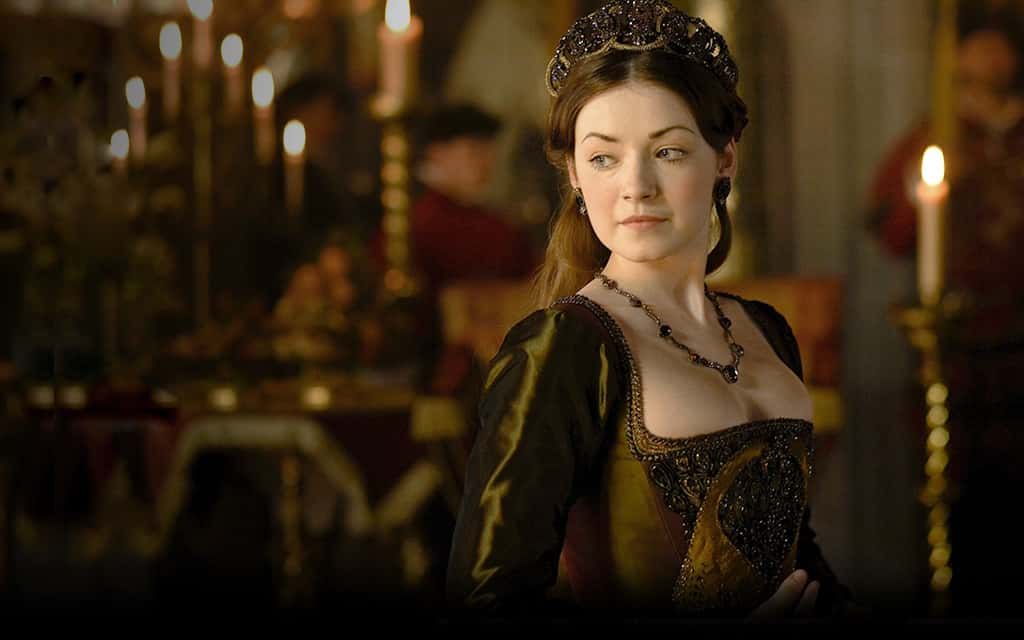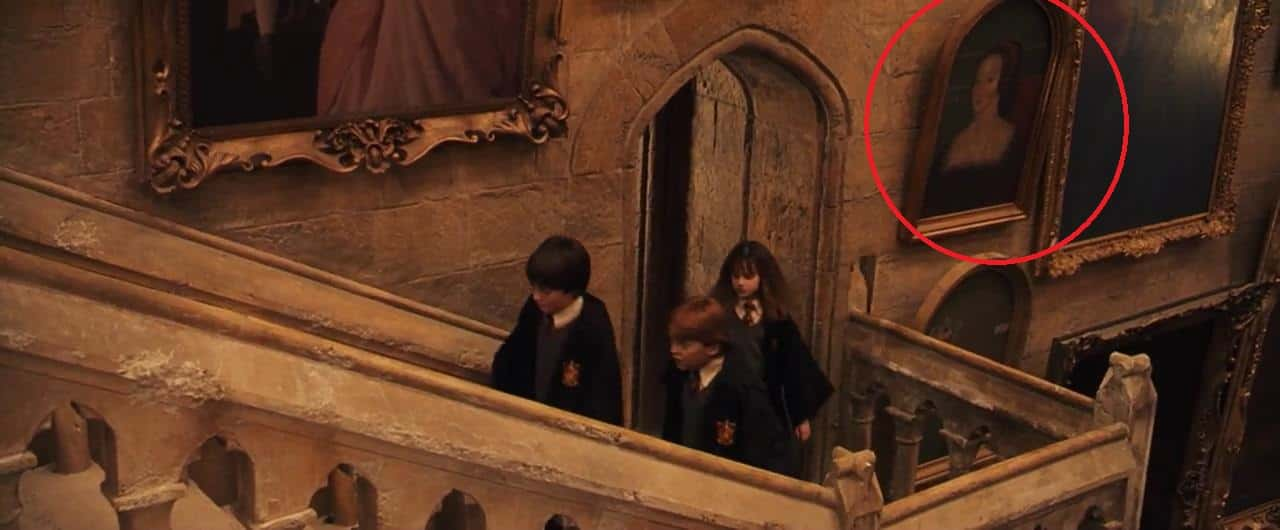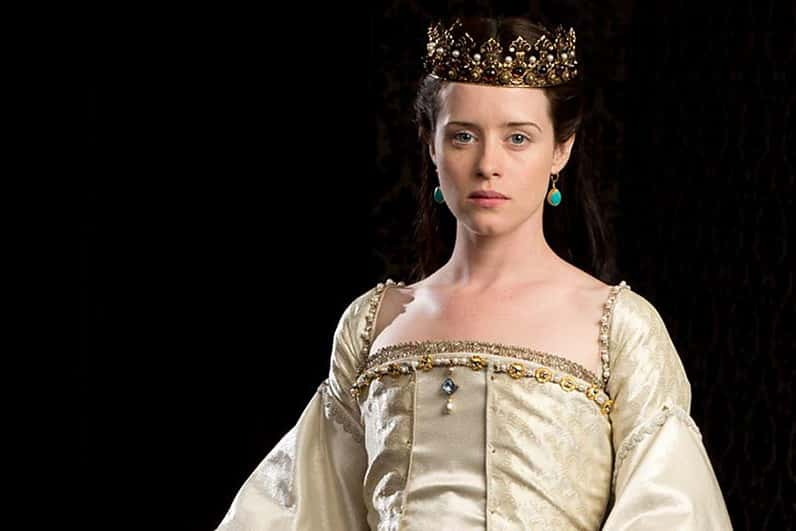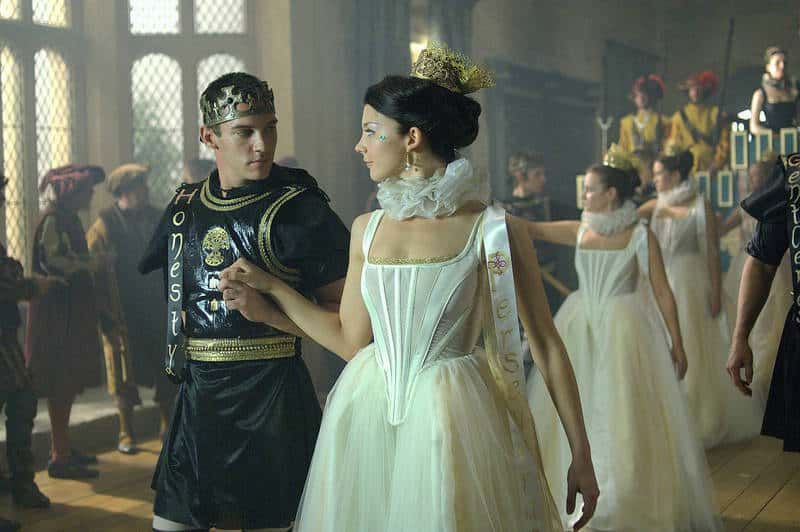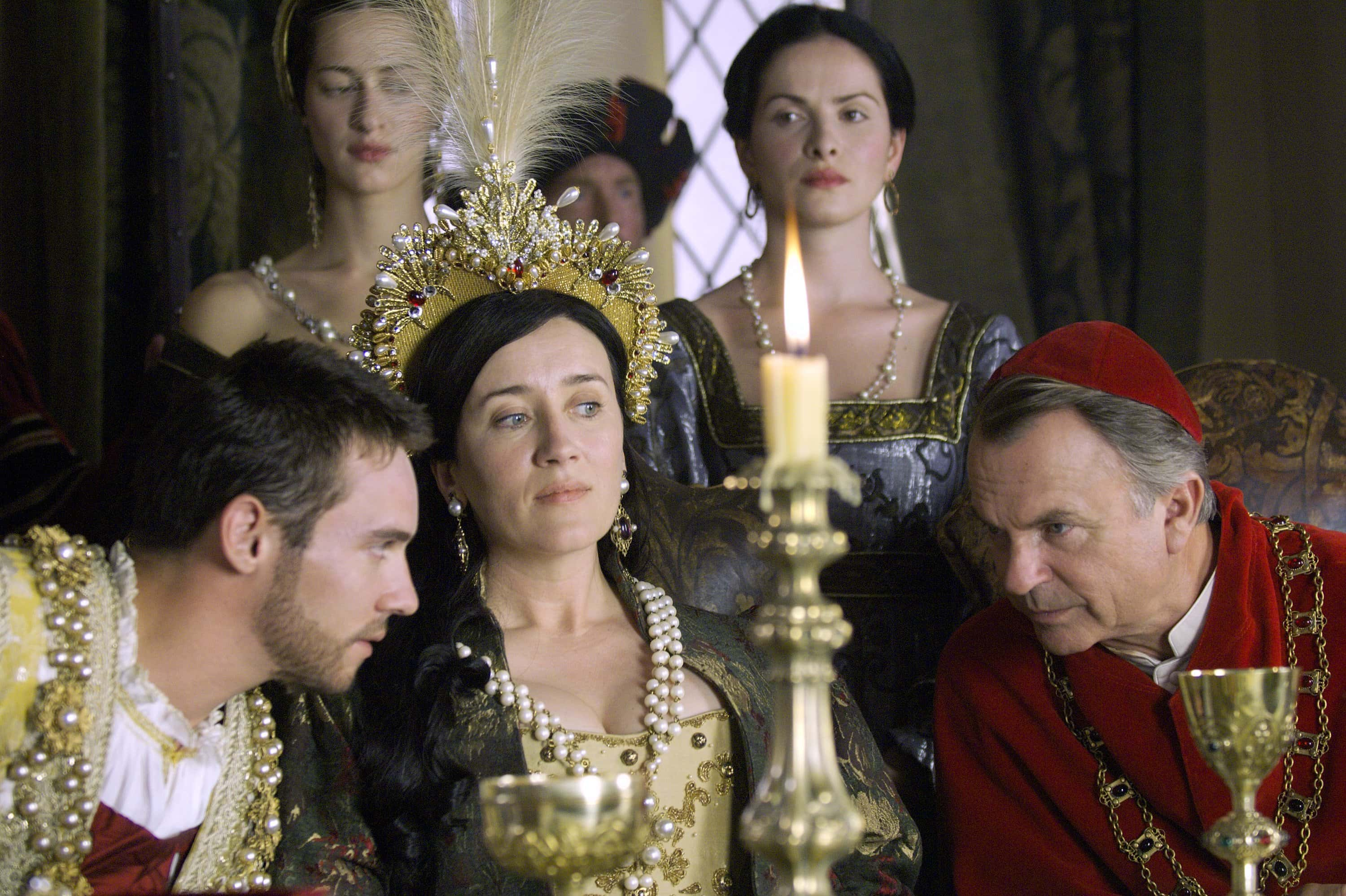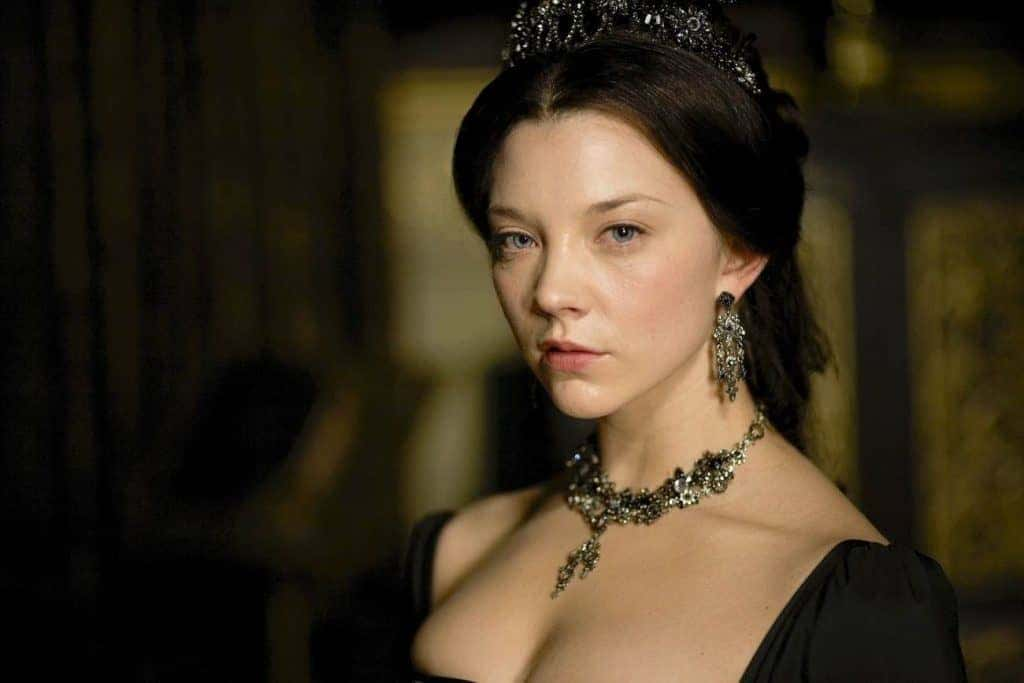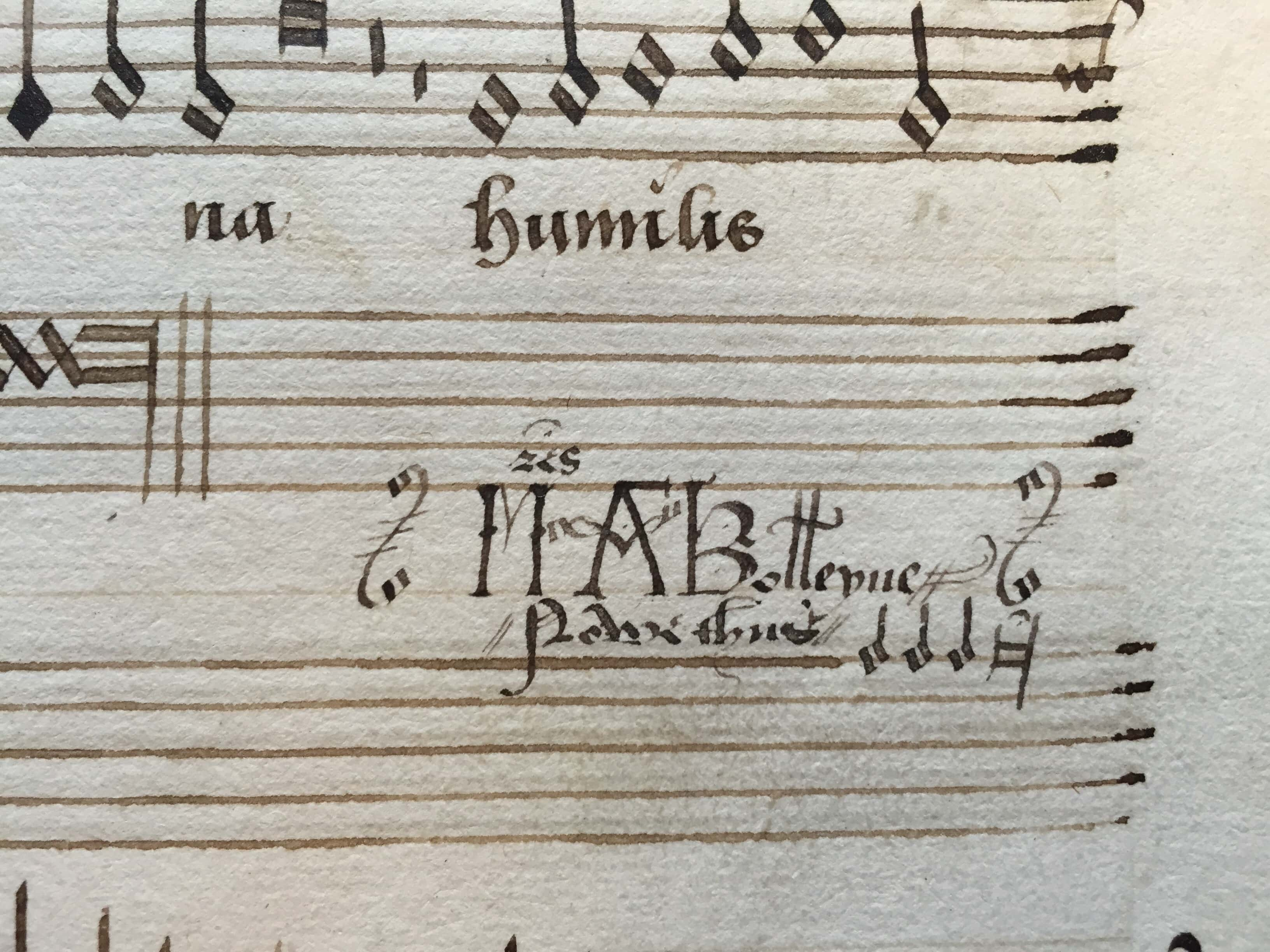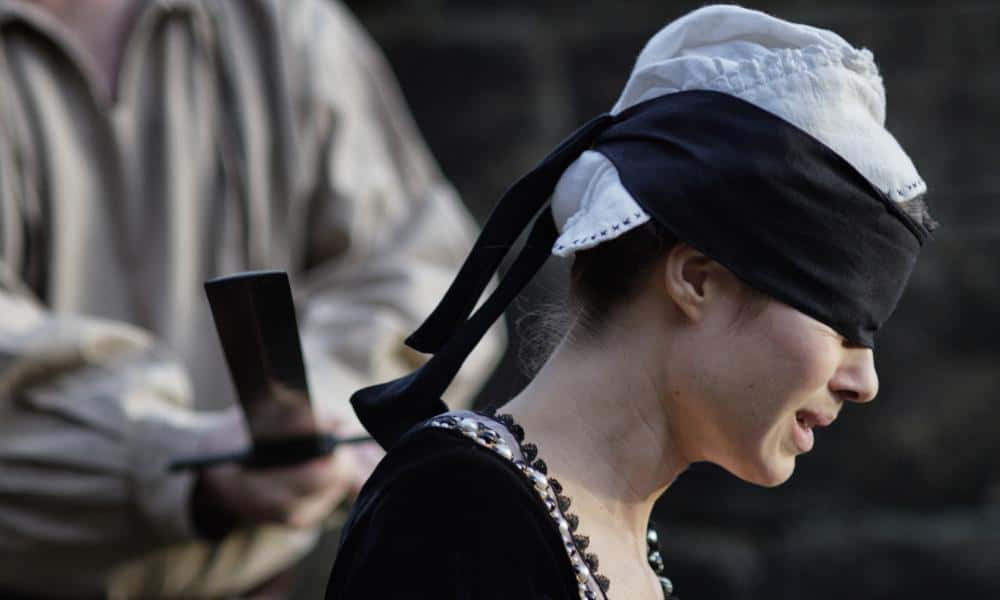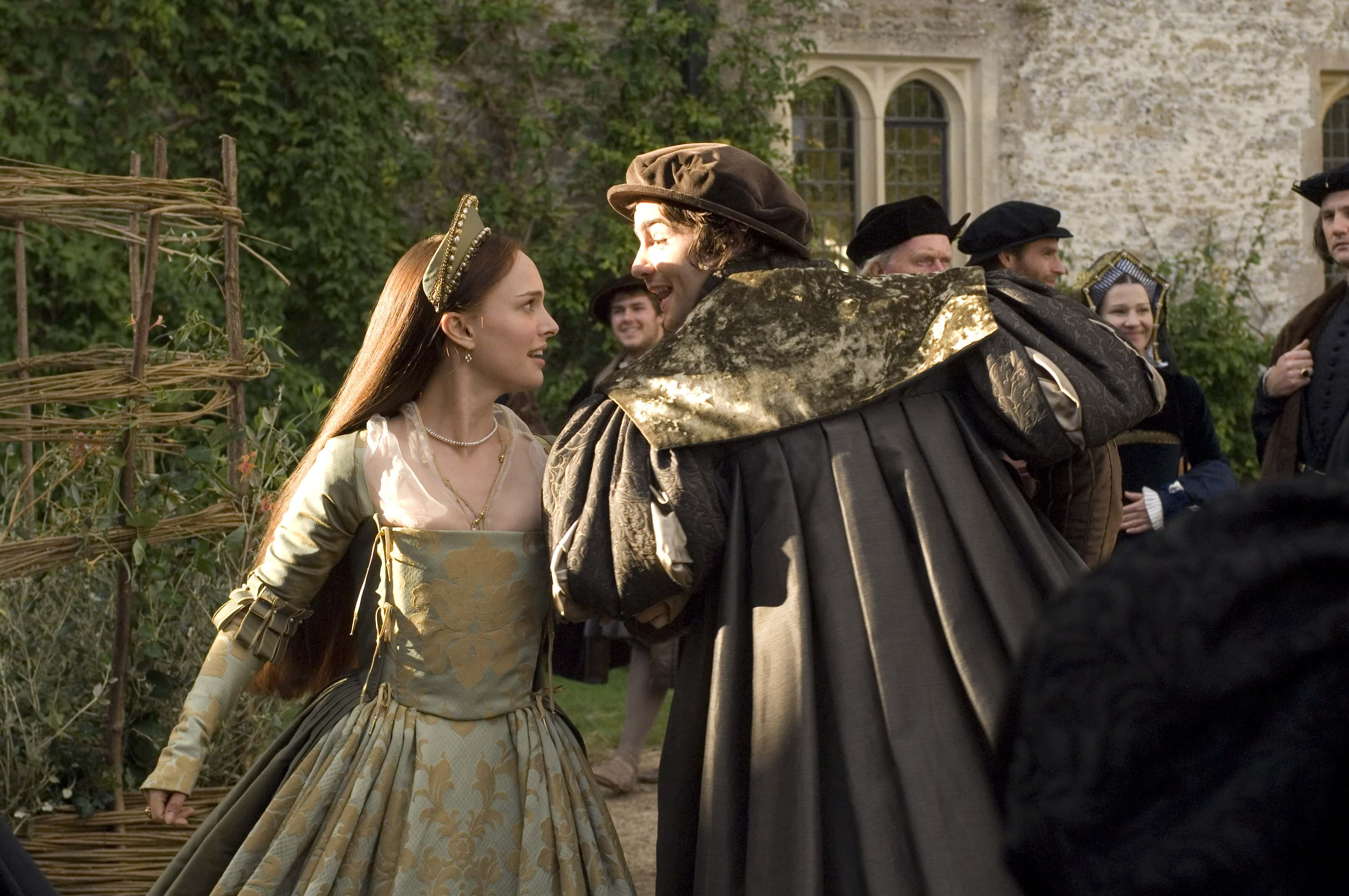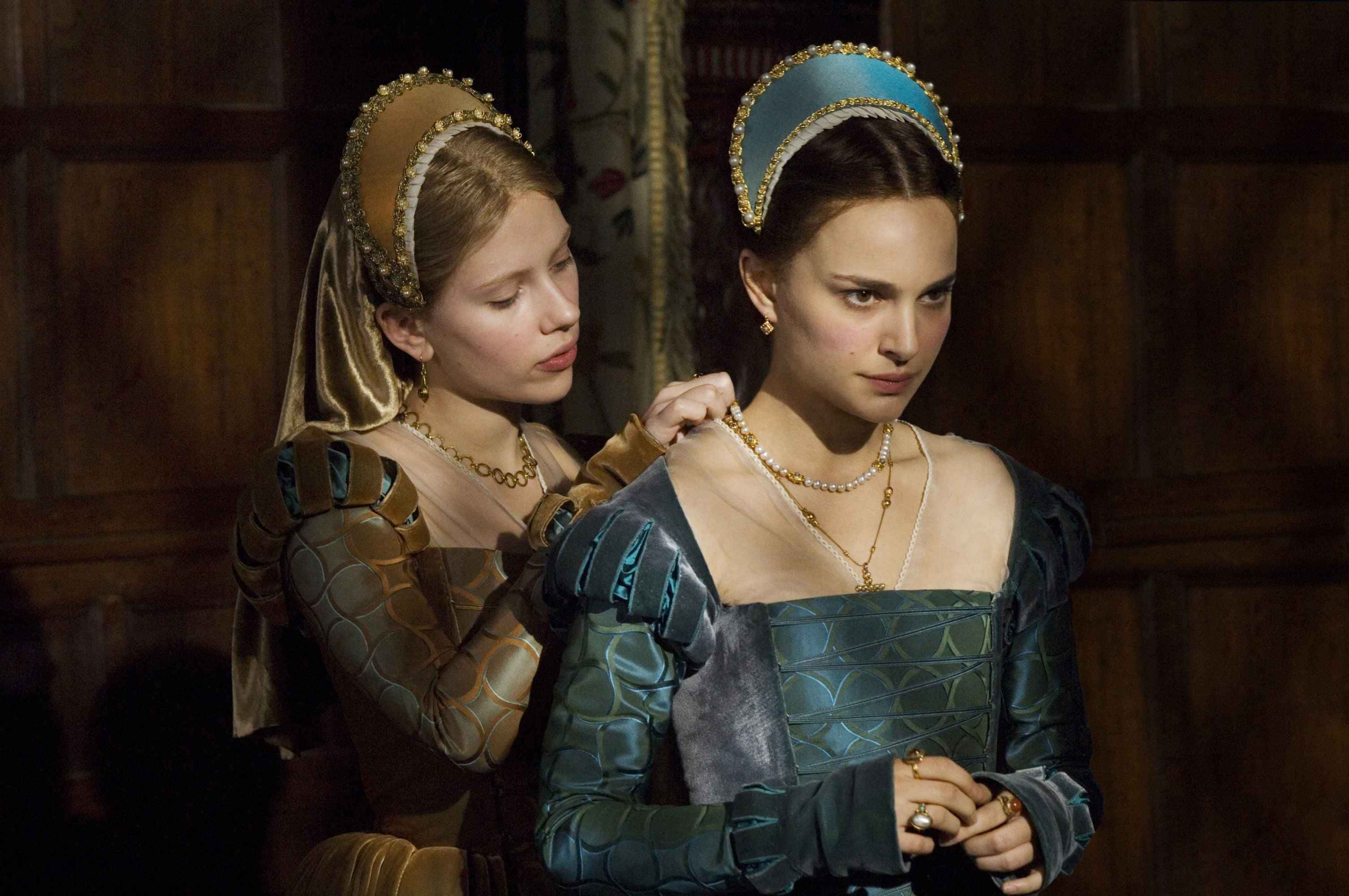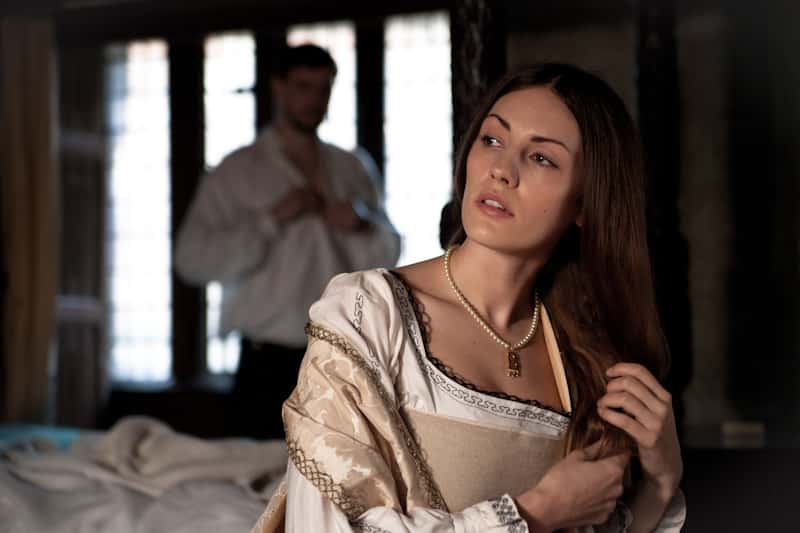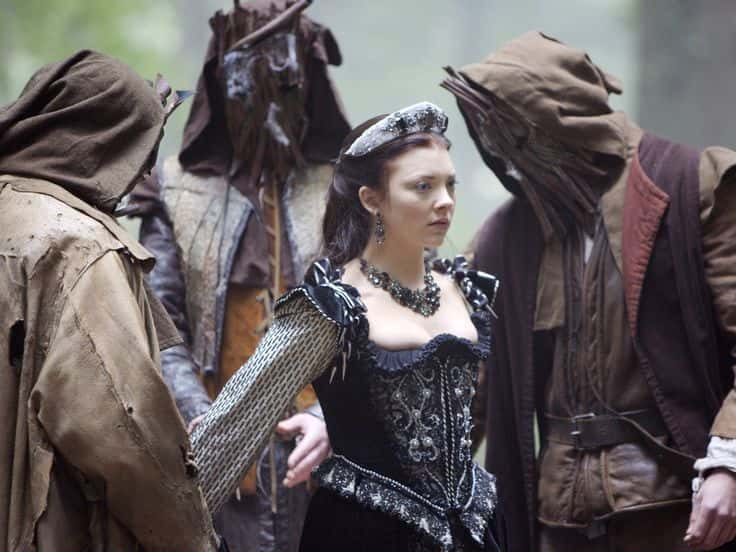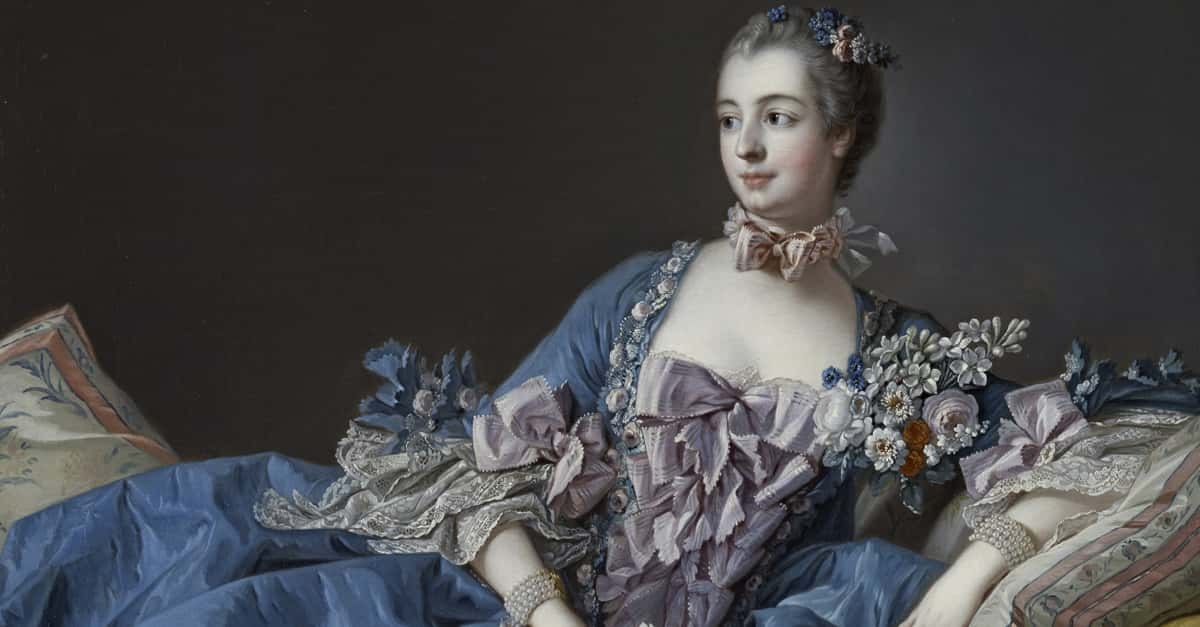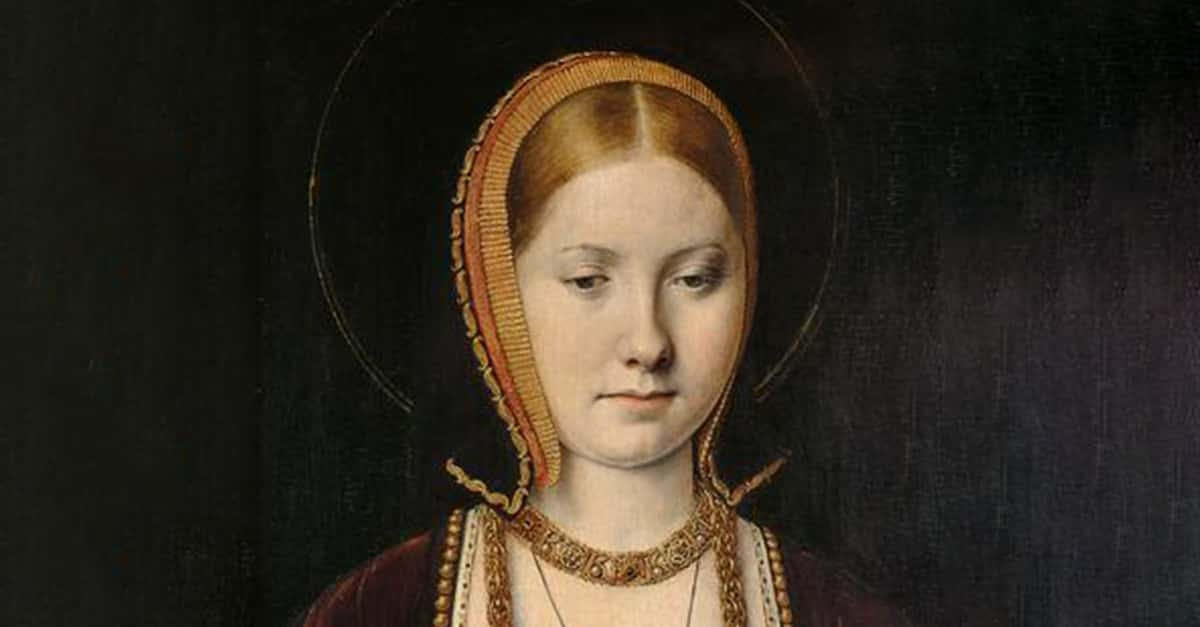16. French Connection
Anne Boleyn spent some time in France in the household of Henry's sister, Mary Tudor. Mary was married to King Louis XII of France, and while there Anne learned to speak French fluently. Biographers also wrote that Anne was more French than English in her mannerisms, and her "Frenchness" was part of her appeal.
15. Hanging at Hogwarts
In the Harry Potter films, Anne Boleyn’s portrait can be seen hanging along the staircases at Hogwarts. In the Harry Potter Universe, Boleyn is accused by muggles (non-wizards) of being a witch, but she was actually a squib—a non-magical person born to at least one magical parent. It is also suggested that she may have given Henry one or two love potions to get him to marry her.
14. Dramatic Allure
Anne Boleyn was never described in history as being classically beautiful. She had a dark complexion and black hair, which made her stand out in a culture where milk-white paleness was seen as the epitome of beauty. Her most striking feature was her eyes which, according to one contemporary, were “black and beautiful.”
13. Ignited the Reformation
Henry’s desire/need to marry Anne Boleyn led to the English Reformation. When the Catholic Church refused to grant him an annulment from his first marriage, he broke with the church and declared himself head of the Church of England. This gave him the power to grant himself a divorce and marry Anne. Some historians believe that Anne was a zealous supporter of the Protestant cause and a passionate reformer, but there’s no proof to that end, only speculation.
12. Eleven-Fingered Woman
One of the most widely perpetrated myths about Anne Boleyn is that of her extra finger. Catholic Propagandist Nicholas Sander wrote about the Queen’s 11th finger decades after she’d been executed. He referred to seeing a sixth finger on her right hand, a tooth that protracted unattractively under her lower lip and an unsightly cyst on her throat. In reality, he never saw the Queen in person, and the King didn’t generally like women who weren’t attractive.
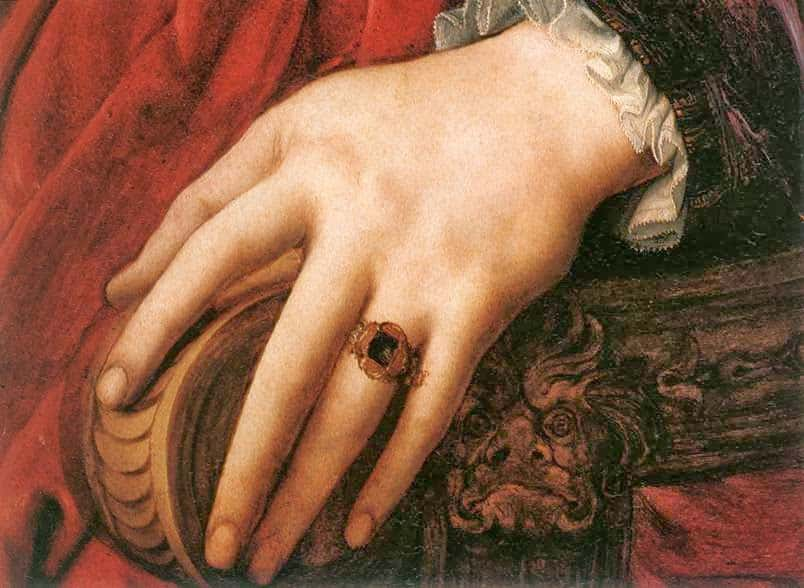 Under These Restless Skies
Under These Restless Skies
11. The King’s Whore
Anne Boleyn was definitely not the "People’s Princess." Many of the king’s subjects were still aligned with his first wife Catherine and blamed Anne for breaking up their marriage. Catherine’s supporters referred to her as the "King’s Whore." They also blamed her for turning Henry against the Catholic Church, and for causing the King’s erratic, tyrannical behavior. It should also be noted that in those days a woman’s sexuality was her only power, and it was widely assumed that Anne had some kind of sexual hold over her husband.
10. Birthdate Uncertain
The exact date and location of Anne’s birth is unknown. Historians place her birth either in 1501 or 1507, but most historians believe the date to be 1501. If it was 1507, she would have been 28 when she was executed, certainly still of child-bearing years, meaning that her inability to produce a son couldn't have been a valid reason for executing her. If she was born in 1501, she would have been around 35 when she was executed (middle-aged by Tudor standards), and that would suggest that her character assassination was deliberately plotted by the King’s advisor Thomas Cromwell for political reasons.
9. Musical Reprieve
A songbook believed to have been owned by Anne Boleyn is owned by the Royal College of Music in London, and in 2016 a choir arranged a performance of songs from the book. It's suspected that a song in the book about death may actually have been written by Boleyn.
8. A Notable First
Anne Boleyn is also notable for being the first Queen of England to be publicly executed. Once found guilty, she was originally sentenced to burn, but Henry changed it from burning to beheading. He called in an expert swordsman from France to carry out the execution instead of using the typical axeman.

History's most fascinating stories and darkest secrets, delivered to your inbox daily.
7. Contrary Anne
Soon after the birth of their daughter Elizabeth, the same traits that Henry had initially found alluring became an annoyance to the king. Anne was outspoken, frequently contradicted Henry and argued with him in public. Just a couple of days before her arrest, Scottish theologian Alexander Alesius claimed to have witnessed an argument between the pair. What they were arguing about is unknown, but their relationship has been described as “storm followed sunshine, sunshine followed storm.”
 Pinterest
Pinterest
6. A Secret Engagement
While at court, Anne caught the eye of Henry Percy, heir to Earl of Northumberland. The pair fell in love and were secretly engaged to marry, but King Henry VIII was also interested in Anne and ordered the cardinal Thomas Wolsey to end their engagement.
5. Not the Momma
King Henry VIII’s interest in Anne Boleyn was controversial, and not just because he was already married. Henry was already having an affair with Anne’s older sister, Mary. There were also rumors that her mother Elizabeth Howard had also been bedded by the King. Despite public accusations claiming the affair, the King denied it, stating “never with the mother” when challenged.
4. Loose Lips Sink Heads
While being kept prisoner in the Tower of London, Anne let her guard down and spoke without censor about conversations she’d had with Mark Smeaton and Henry Norris—the men named in her adultery charges. The lieutenant of the Tower took note and reported her words to the King, who took her words as proof of her adultery. She also unintentionally caused the arrest of Sir Francis Weston when she claimed that he’d once professed his love for her. This was enough "evidence" to result in the execution of Weston, who before then had nothing to do with the investigation. Four other implicated men were executed as well, just two days before Anne's own demise.
3. False Charges
Boleyn was accused of adultery with 5 men (including her brother), and of plotting to murder the king and her lovers so she could marry Henry Norris. Modern historians agree that the charges brought against Anne Boleyn that led to her execution were false and unconvincing and that Henry had her killed just because she didn't happen to have any male children.
2. Is it Her?
Despite the careful planning that went into Anne Boleyn’s execution, little to no thought was given to what should be done with her remains afterward. Not having arranged for a coffin, her remains were allegedly put into an old arrow chest, and she and her brother were buried in an unmarked grave in front of the altar at the Church of St. Peter ad Vincula. In an interesting twist, it turned out that five other beheaded women had been buried under the altar, and it had simply been assumed that the bones found in an arrow chest there were hers. There is also a theory that her relatives had her body secretly reburied somewhere else, which based on that discovery, might have been true. Without DNA testing, the truth will probably never be known.
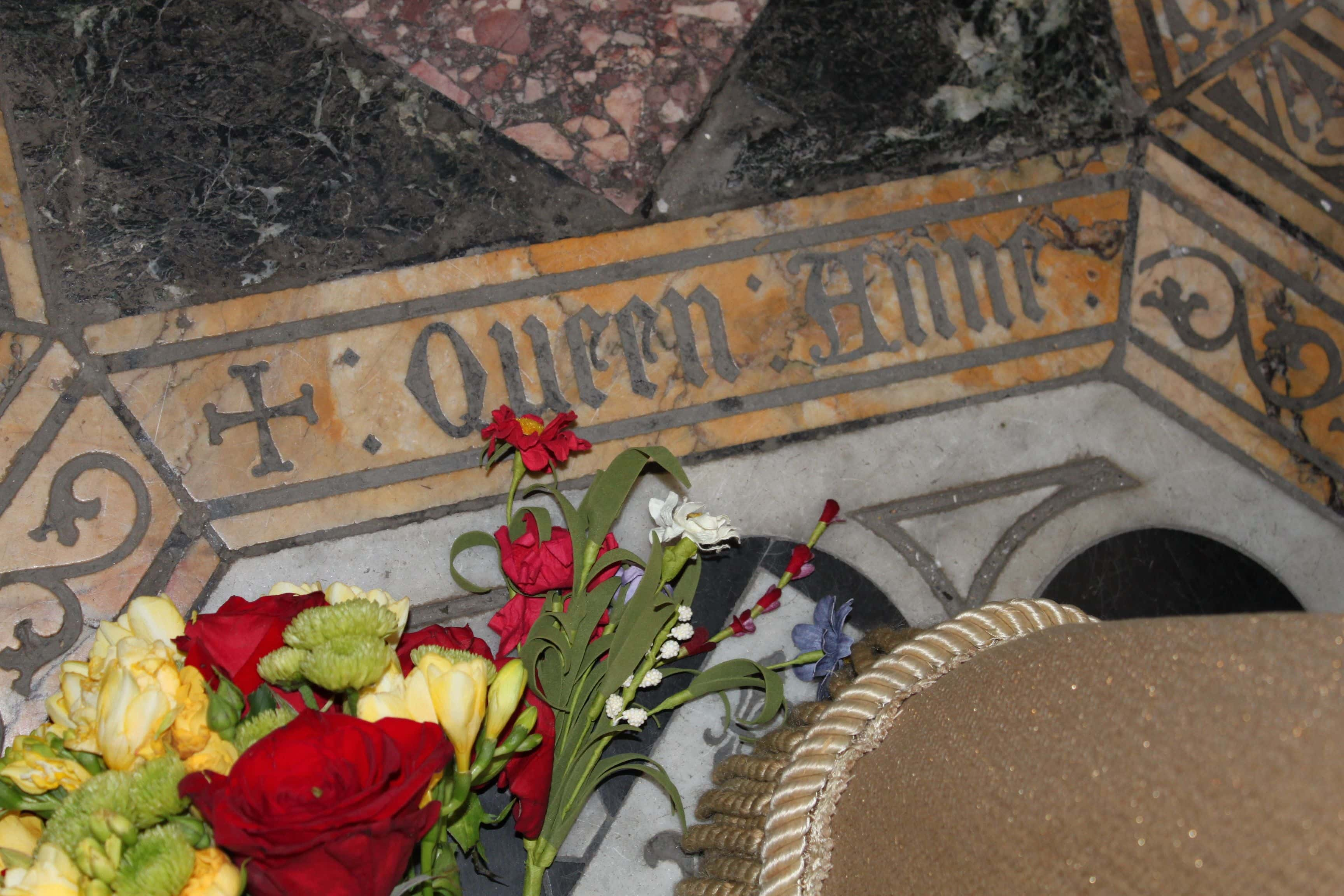 Onthetudortrail
Onthetudortrail
1. Treason…
When Anne Boleyn was brought to the scaffold to die, she begged leave to address the crown and was granted the right to do so. Despite the limited evidence against her, she said, “Good Christian people, I am come hither to die, for according to the law, and by the law, I am judged to die, and therefore I will speak nothing against it. I am come hither to accuse no man, nor to speak anything of that, whereof I am accused and condemned to die, but I pray God save the king and send him long to reign over you, for a gentler nor a more merciful prince was there never: and to me he was ever a good, a gentle and sovereign lord. And if any person will meddle of my cause, I require them to judge the best. And thus I take my leave of the world and of you all, and I heartily desire you all to pray for me. O Lord have mercy on me, to God I commend my soul.”
As she awaited the executioner’s blade, kneeling on the block, she repeated the phrase, “To Jesus Christ I commend my soul; Lord Jesu receive my soul.”
 YouTube
YouTube
Sources: 1, 2, 3, 4, 5, 6, 7, 8, 9, 10, 11, 12, 13, 14, 15, 16, 17, 18


